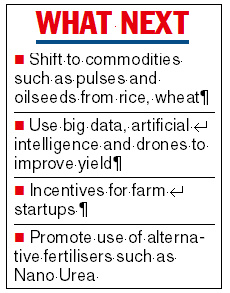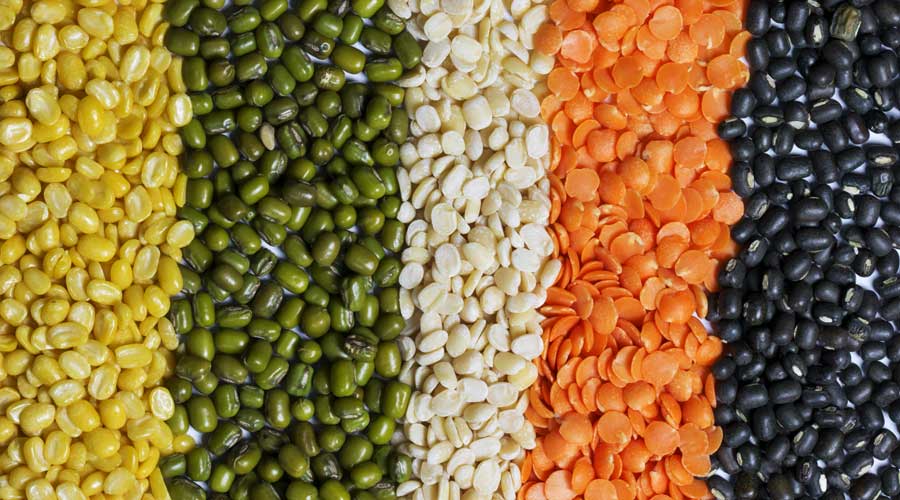The Survey suggests that farmers should be persuaded to move away from rice and wheat to other commodities.
“Encouraging farmers to shift from cultivation of rice and wheat to pulses and oilseeds would help ensure that the country is self-reliant in pulses and oilseeds and also assist in reducing import dependence,” it said.
The Survey also favoured a fresh plan to deal with India’s chronic agrarian distress, including use of big data, artificial intelligence (AI), drones, and incentives for startups to enable farmers to get swifter and accurate information about weather, prices and other aspects.
“There is a need to explore options and promote use of alternative fertilisers such as Nano Urea and organic fertiliser which protect the soil, are more productive and contribute to higher nutrient use efficiency. Focus should be on use of new technology including drones and AI-based decision support systems, reduction in use of chemical fertilisers and use of low-cost organic inputs and supporting start-ups for innovations,” it said.
The Survey said the farm sector has been resilient to Covid19 and is estimated to grow at 3.9 per cent this fiscal.

“The performance of agriculture and the allied sector has been resilient to the Covid-19 shock. Growth in allied sectors including livestock, dairying and fisheries has been the major drivers of overall growth in the sector,” the Survey said. The agriculture sector has experienced buoyant growth in the past two years. It is estimated to grow at 3.9 per cent during 2021-22, from 3.6 per cent in the previous fiscal.
Stating that the allied agri-sectors are steadily emerging to be high growth segments, the Survey said, “Increasing importance of allied sectors including animal husbandry, dairying and fisheries in growth and income of the farmers indicates that focus needs to shift more towards harnessing the potential of allied activities.”
Allied sectors
The latest Situation Assessment Survey (SAS) has also found that the allied sectors have been stable sources of income across groups of agricultural households, accounting for about 15 per cent of their average monthly income.
According to the SAS report 2021, the average monthly income per agricultural household, as per paid out expenses approach, works out to be Rs 10,218, compared with Rs 6,426 as per the last SAS Report of 2014.
With increasing fragmentation of holdings, the Survey said there is also a need to improve productivity of small and marginal farmers through development and implementation of small holding farm technologies.










